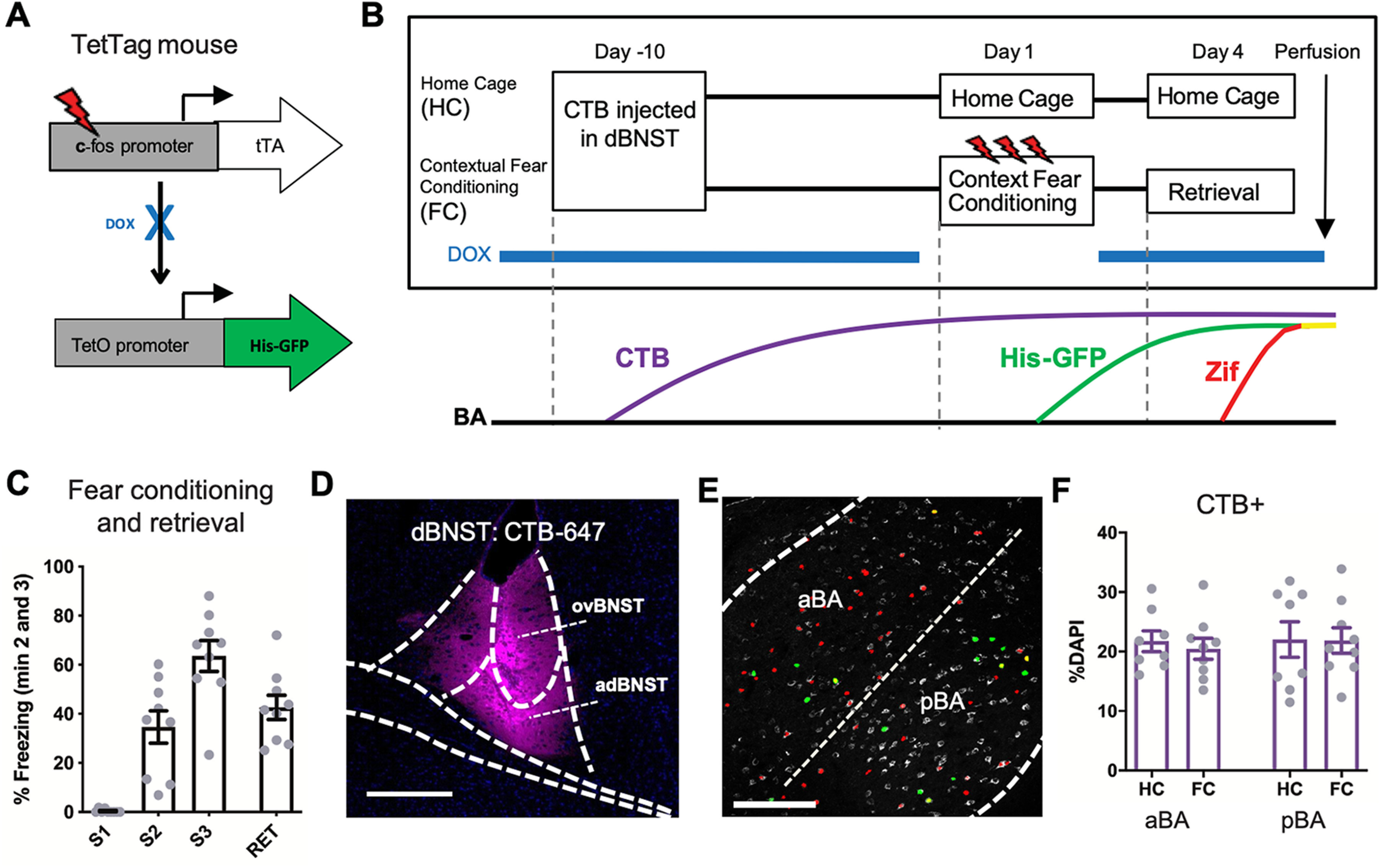Figure 1.

The TetTag mouse and retrograde tracing are combined to investigate BA-dBNST circuitry function in contextual fear memory. A, Schematic of the double transgenic TetTag mouse line. Tetracycline transcription activator (tTA) is expressed under control of the c-fos promoter. In the absence of doxycycline (DOX), tTA binds to the tet operator (TetO) in the second transgene and drives expression of histone2B-GFP (His-GFP). His-GFP is long lasting and localized to the nucleus of cells activated during the off-DOX period. B, Experimental paradigm for the CTB-injected FC group (n = 9) versus HC group (n = 8). Lower panel shows the corresponding expression timeline of the CTB, His-GFP, Zif. C, The FC group showed typical levels of freezing during fear conditioning trials (S1, S2, S3) and retrieval session (RET). Freezing percentages are an average of the second and third minutes of each session. D, CTB-647 expression near the injection site in the dBNST. Scale bar = 200 μm. E, CTB-positive cells (CTB+, grayscale) in the BA with Zif mask (red), GFP+ mask (green), and colocalizing GFP+Zif+ cells (yellow). Scale bar = 100 μm. F, Percentage of CTB+ cells among DAPI cells in the aBA and pBA were similar between FC and HC groups. Graphs show means ± SEM.
